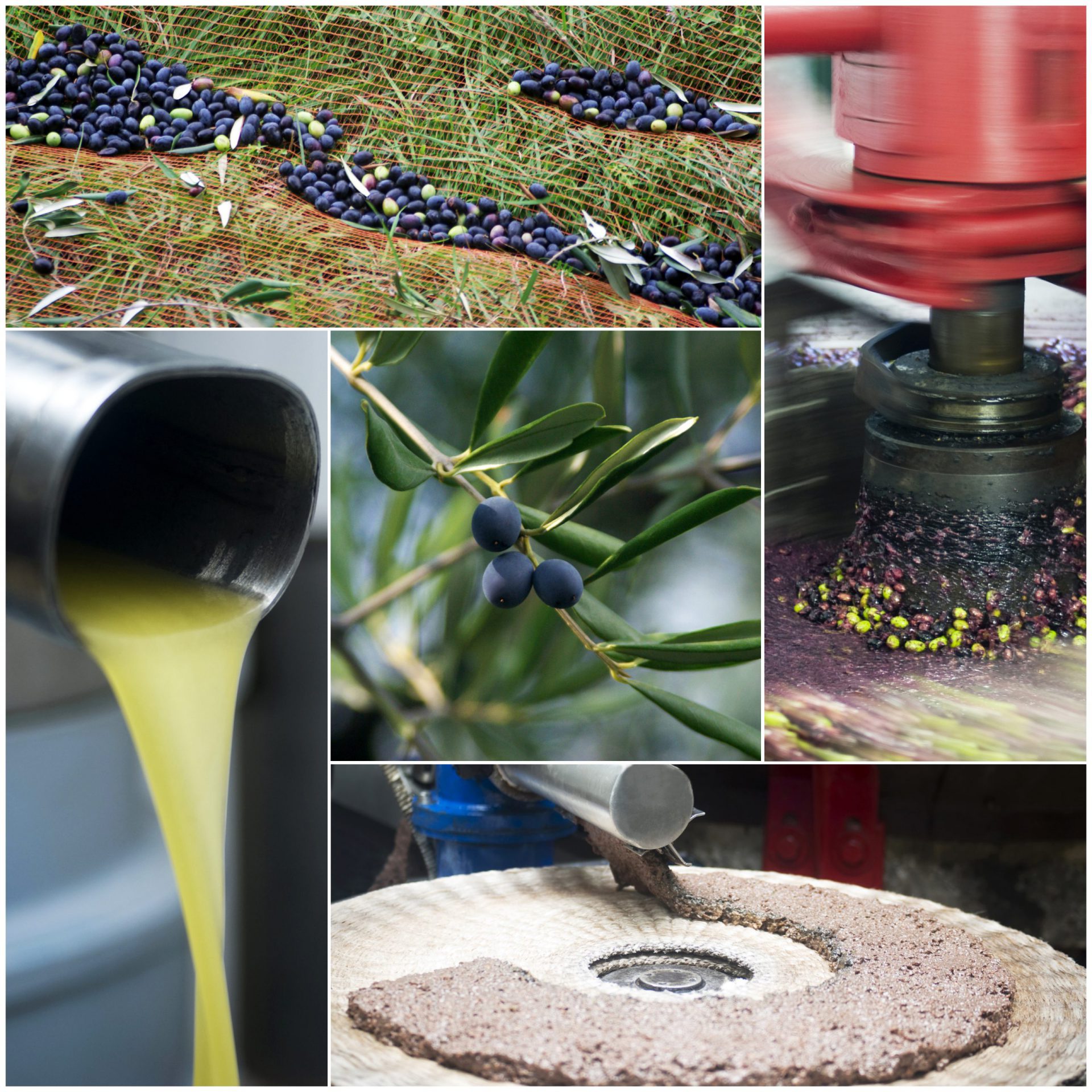Comment produit-on de l’huile d’olive : De la récolte à l’embouteillage

Lorsque les olives sont prêtes à être récoltées, elles sont cueillies soit manuellement soit automatiquement. Pour les huiles d’olive de qualité, la récolte se fait manuellement, au peigne, ensuite la récolte est récupérée sur des filets. Les olives sont ensuite amenées auprès du moulinier qui va triturer les olives au moulin.
Historiquement, la première pression de la pâte d’olive se faisait à froid et la seconde avec de l’eau chaude pour favoriser la récupération de l’huile restante.
Les olives étant récoltées en hiver, elles fermentaient quelques jours avant d’être pressées pour les réchauffer naturellement. Cela permettait de libérer davantage les arômes.
L’évolution des presses et centrifugeuses permet désormais de n’opérer plus qu’une seule pression et préserve l’olive de son ennemi numéro un: l’oxydation.
Les véritables huiles d’olives sont donc forcément issues de la première pression : les olives sont débarrassées de leurs feuilles (effeuillage), lavées, puis sont intégralement broyées (y compris avec le noyau). Les cellules végétales de la pulpe sont éclatées, ce qui permet de libérer les gouttelettes d’huile. Vient ensuite le malaxage au cours duquel s’élaborent les arômes et se regroupent les gouttelettes d’huile.
La pâte d’olive ainsi obtenue passe dans une centrifugeuse horizontale (décantation) dans laquelle est séparée l’huile des résidus solides et au cours de laquelle la température doit rester en dessous de 27°C. C’est l’extraction proprement dite.
Enfin, une dernière centrifugation du liquide dans une centrifugeuse verticale permet d’éliminer les gouttelettes d’eau résiduelles, on obtient ainsi une huile d’olive prête à être stockée ou embouteillée.
Et pour terminer, sachez que les premières olives apparaissent après 7 ans et que l’olivier atteint sa maturité de production au bout de 20/30 ans et ce jusqu’à 150 ans (en comparaison, la vigne commence à produire après 3 ans et un arbre fruitier après 5 ans). Un olivier produit en moyenne de 15 à 50 Kg d’olives par an et pour faire un litre d’huile d’olives il faut 5 à 8 kg d’olives.
Si vous souhaitez en savoir plus, n’hésitez pas à nous contacter et nous seront ravis de faire quelques articles supplémentaires sur le sujet !
A très bientôt pour de nouveaux blogs,
Myriam & David
